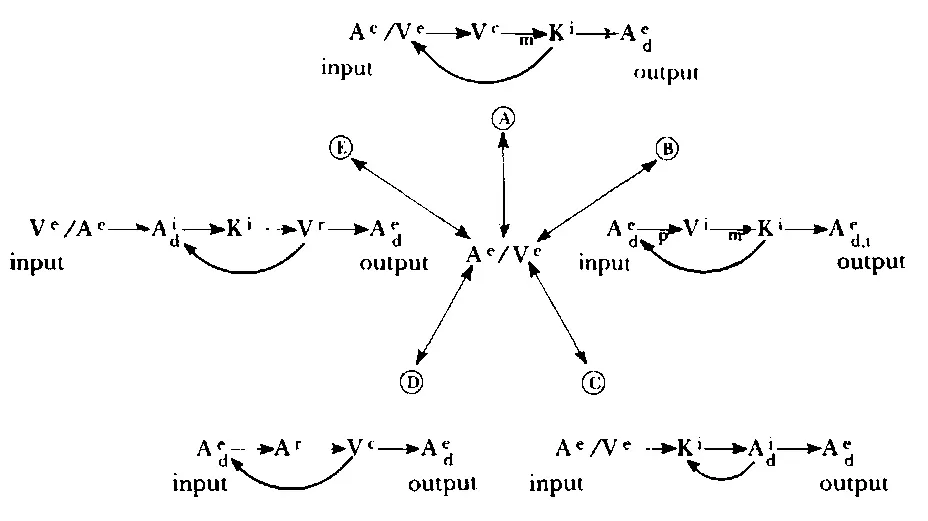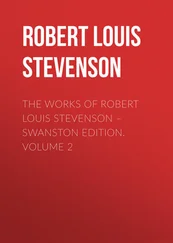Any given specific outcome or task is framed within the context of a higher order outcome, an organizing principle or "meta–outcome" for the system (ie., the individual or organization). A meta–outcome is one that organizes the behavior of the system in terms of general goals like the preservation and survival, growth and evolution, protection, betterment, adaptation, etc. of the system. To be ecological, any other outcome or strategy must contribute to these basic outcomes. Most naturally occurring strategies and outcomes are geared for achieving the adaptive meta–outcomes, but it will be important to test to make sure those that are artificially designed are congruent with these meta–outcomes. Gregory Bateson in Steps to an Ecology of Mind discusses some of the dangers of what can happen if outcome oriented behavior is not kept ecological. (See his article, "Conscious Purpose versus Nature" pp. 426–439)
One should take note, that, as with the case of the phobic response discussed earlier in this section, some strategies and outcomes which contributed to one of these meta–outcomes at one point in time and/or in a particular context may actually be counterproductive to the achievement of that outcome in other circumstances, and it will important to include specific context markers in your design.
Often, establishing the meta–outcome first will help you in the choice and design of specific outcomes and strategies.
5.32 Applying Artificial Design in a Group Situation.
Designing a strategy for a group or organization draws from the same basic principles as individual strategy design. The purpose is to accomplish an outcome in the most effective manner possible. In an individual's strategy, the elements that you sequence to perform tests and operations are the representational systems — in an organization the elements that you sequence to perform the various tests and operations are the people. As in a strategy for an individual, a strategy for an organization will be composed of the following parts: 1) gathering and inputting information, 2) processing that information by making tests, associations, generalizations and discriminations, 3) operating and outputting in response to the outcome of this processing, and 4) gathering feedback on the effects of the operations and outputs. We can diagram these visually in the following way:

An organization is in essence a TOTE in which people are the elements that perform the test 8c operate functions instead of representational systems. In designing a strategy for an organization you will need to take the same things into account that you do when designing a strategy for an individual:
a) What is the desired outcome of the strategy? DESIRED STATE
b) How will you know if you have achieved it? FEEDBACK
c) What specific elements and functions are required to achieve the outcome? REQUIRED RESOURCES (division of labor)
d) Which of these are already available in the organization you are working with and which are missing? PRESENT STATE (Cost–benefit analysis: Should you try to obtain the missing resources, or design the strategy with what you already have?)
e) How do you sequence and schedule your elements and functions to achieve the outcome in the most elegant and efficient way possible?
Let us demonstrate how neurolinguistic programming principles and strategy technology may be used to engineer an effective group strategy by means of an example showing its application to team building, decision making and brainstorming procedures. The example is drawn from our consultation work with businesses and organizations.
Suppose you are consulting for a group of five executives involved in a decision making process (for instance, let's say they are based in New York and are trying to decide whether to expand to Pennsylvania and to initiate several specific new programs). The executives are having a difficult time, however. Each has a strategy that operate in such a way that his or her behavior tends to negate that of one or more of the others. They are out of rapport and end up mostly arguing with one another. The conflict is delaying and distracting them from achieving their outcome. Using NLP principles you would set about organizing the situation in the following way:
1. The programmer establishes him/herself in meta–position— having no committments other than insisting on a high quality outcome, independent of the content of that decision.
2. The programmer elicits and states as explicitly as possible (skill with the Meta–Model will help greatly here) the desired outcome (O 1) of this particular session. In this example O 1is to decide whether the program for expansion into the state of Pennsylvania is sound.
3. The programmer then frames this outcome by putting it into the context of the corporate or meta–outcomes (O m). Meta–outcomes in this example might include:
a) to increase company revenues.
b) to provide a high quality product and service to customers in Pennsylvania which increases
the absolute size of the industry market.
their company's relative share of the market.
4. The programmer and the executives are then to specify (for feedback purposes) what specific elements will constitute an adequate O 1. This will be the outcome sequitur of the particular meeting they are involved in. The information gathering process should also include a consideration of the outcome sequitur (the results of achieving the desired state they are deciding upon) for O 1. For example, O 1is achieved when the program has been reviewed by all group members and either:
a) a decision has been made that the entire program is sound and its implementation is the next step, or
b) a decision has been reached that the overall program is sound and some portion(s) of the program
(a) requires further information.
(b) the information required is identified — sources for the information are identified — the cost of securing such information is adequately offset by the expected value of such information (cost–benefit analysis).
(c) the assignment to secure the information is made and the next meeting scheduled.
c) (3) O 1is judged unsound and Om has again been validated. Assignments to develop alternatives to O 1in achieving O mare made (including feedback to arrange a next meeting at which O 2, O 3,……O nwill be presented as ways of achieving O m).
It will be very helpful in all procedures if all information relevant to the decision making process is available or translatable into all representation systems (verbally, pictorially on graphs and flip charts, and in a way that is relatable to feelings).
5. The programmer should then assess the present state capabilities of each of the participants in the decision making process. Specifically, the programmer should identify what strategy is functioning for the task he is trying to accomplish. This can be accomplished:
a) from the observations the programmer has made of their interactions before he began his interventions.

b) by eliciting an appropriate strategy from the individual's personal history (e.g., "Think of a time that you were able to make a good decision that involved a number of complex issues"). Let's say that the programmer has chosen option (1) and observed the interactions of the executives as they initially attempted to make the decision. From his observations he has been able to determine the following: Each circle represents one of the people involved in the process. Each is inputting the external visual and auditory signals of the others. The strategy sequence nearest them indicates the strategy that has been observed in them by the programmer. PERSON A has been able to take the visual and auditory input (V e/A e) from the others and see at least fifteen new possibilities (V c) that he feels (K i) would increase the revenue of the corporation, and has described these images to the others (A e d). PERSON B, when he has gotten person A's auditory output, has had a polarity response to it and accessed remembered images (V r) of situations similar to those that A is proposing where something has gone wrong. He finds fault with all of A's proposals and has strong negative feelings (K i -) about what he sees as a possible disaster. He expresses these feelings to A in a hostile tone of voice (A e t) which has precipitated a number of arguments between he and A. PERSON C feels that an expansion is necessary (K i) but does not have any clear ideas on what specifically needs to be done, but she keeps telling herself (A i d) that she'll know it when she hears it. PERSON D, through remembering a number of ideas she's heard and picked up, (A r), is able to modify the faults that that B has found in A's proposals so that it looks (V e) as though they may work. PERSON E has been able to figure out how to possibly implement some of both A's ideas and D's revisions by asking himself if it could be done (A i d), beginning to sense himself going through the motions (K i) and then remembering ways similar things were done in the past (V r). From the information he has gathered the programmer can determine that A's strategy tends to be specialized for creativity but is not always practical. B has an effective critical strategy good for testing ideas for possible faults but tends to lack the creativity needed to operate to modify ideas to make them workable. C's strategy is without a visual component and is not particularly useful in terms of creativity. She will make a decision on the basis of her feelings. D has a good strategy for modifying input and making it more practical. D also possesses some creativity. E has a good strategy for implementation but lacks the ability to be creative or to modify.
Читать дальше













